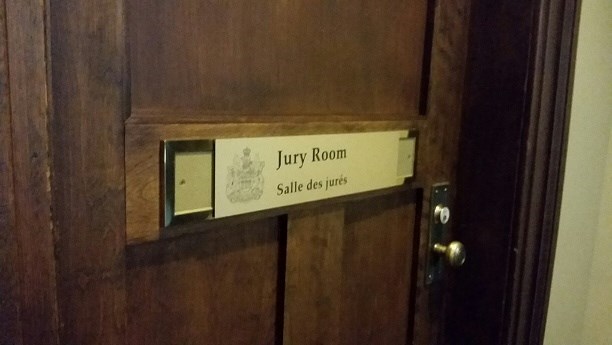After three weeks of evidence in the murder trial of Jaycee Mildenberger for the 2009 murder of Gwenda Gregory, Yorkton's Court of Queen's Bench stands adjourned to "await the pleasure of the jury" as Madam Justice C.L. Dawson put it.
This morning, the defence and Crown made their closing statements to the jury.
The defence case hinges on the idea that confessions elicited by Mr. Big stings are inherently unreliable. Attorney Brian Pfefferle argued that a June 5, 2012 statement by his client to an undercover police officer posing as a crime boss was the result of manipulation and deceit. He said his client made the story up based on details of the crime that were common knowledge in the tiny hamlet of Usherville where the murder was committed in order to obtain Mr. Big's help because the undercover officer told him he was going to jail whether he was guilty of not.
Pfefferle called the holdback information, (key details police keep to themselves that only the killer would know) "insufficient" to prove guilt.
A second statement obtained after Mildenberger's arrest was also unreliable, Pfefferle said, because the interviewing officers chose to continue the lies and manipulation putting Mildenberger in a positon of fear for his family.
He cited areas of Mildenberger's statements that were inconsistent with the crime scene such as there being 30 injuries to Gregory's body, but Mildenberger said he only punched her once. Pfefferle also noted there was no forensic evidence linking Mildenberger to the scene and no physical evidence of a sexual assault, which Mildenberger admitted to in the second statement.
The key to the Crown's case was the two confessions bolstered by corroborating evidence derived from the first confession, namely the knife Mildenberger led undercover officers to near a snowmobile shack north of the accused's house, which the Crown presented as the murder weapon. Andrew Wyatt representing the Queen, characterized Mildenberger's recanting of his confessions after the fact as "ridiculous" and defying "common sense."
He asked, for example, why after the interviewers in the second statement revealed the gangsters Mildenberger was ostensibly afraid of that compelled him to confess were actually police officers, why he didn't retract the confession immediately.
Wyatt summarized the evidence pointing out where in his opinion Mildenberger's testimony diverged from reasonableness, for example knowing details such as how many cuts there had been to Gregory's throat and that she had died in the tub. As a witness, Wyatt argued, whenever Mildenberger was cornered by these kinds of questions, he said he didn't know or had made a lucky guess.
The prosecutor described Mildenberger's testimony as completely unreliable saying the only reasonable and believable things mildenberger had to say were his two confessions.
After the summations, the judge spent five hours instructing the jury on the law, assessing evidence, reasonable doubt and credibility, principles of evidence, motive. expert opinion, character evidence and the nature of Mr. Big operations. She summarized the testimony of all the witnesses, Mildenberger's two statements and the Crown and defence positions.
Dawson outlined in detail the four essential elements the Crown must prove, beyond a reasonable doubt, for the jury to arrive at a verdict of guilty of first degree murder. These are: 1. Whether it was Jaycee Mildenberger who caused Gwen Gregory's death? 2. Did he do it by an unlawful act? 3. Did he have the intent to do it? 4a. Was it planned and deliberate? 4b. Was the murder part of a continuous series of events related to a sexual assault? 4c. Was the murder part of a continuous series of events related to unlawful confinement?
If the answer to either of the first two questions is no, she instructed the jury that they must find Mildenberger not guilty. If the answer to the third question is no, then the verdict must be guilty to the lesser included charge of manslaughter, she said. Finally, if the answer to all of 4a, 4b and 4c is no, then he is guilty of the lesser included charge of second degree murder.
The Crown contends that he is guilty of first degree murder on all three of the conditions for that charge. The judge told the jury they only need to find that one of the three applies and individual jury members do not have to agree on which one it is.
The jury is currently deliberating. Stay tuned to yorktonthisweek.com for the verdict.
RELATED:




